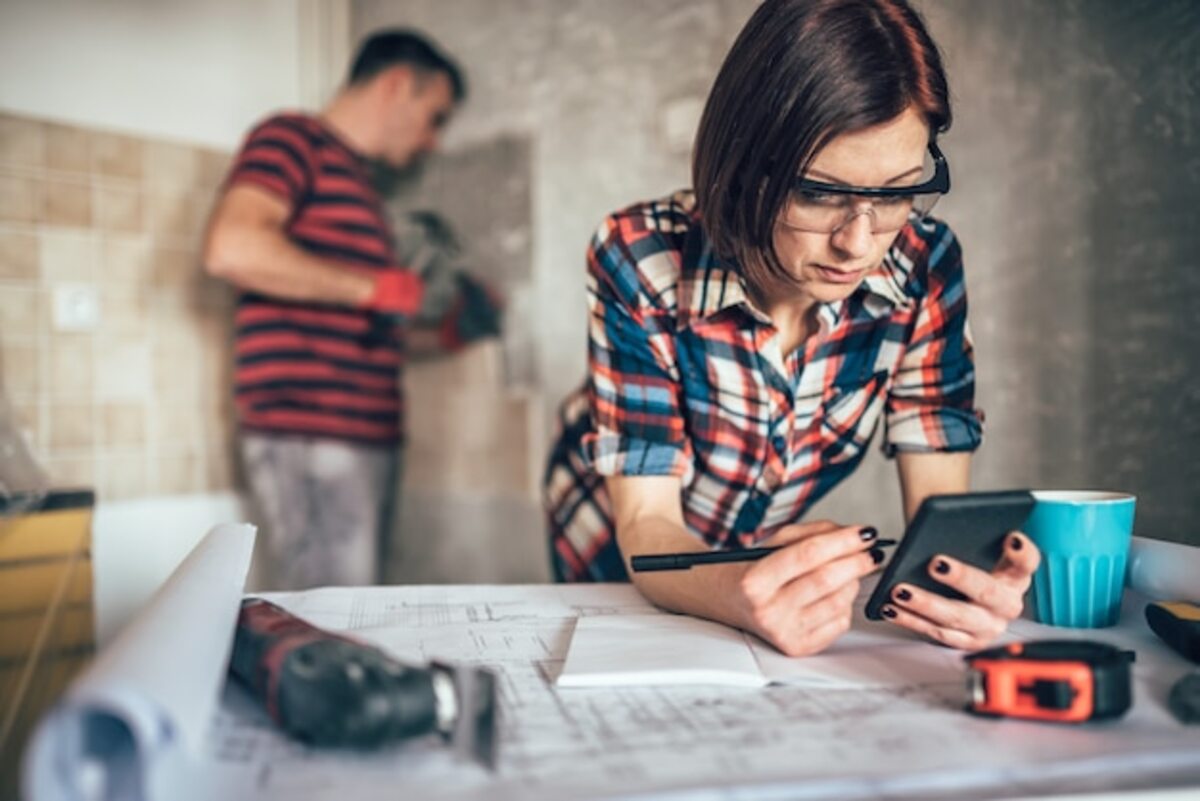Transform your home with bold and effective financial decisions.

Transforming your home involves not only aesthetic changes but also bold financial decisions that can maximize your investment. In this article, we will explore how making effective housing cost decisions can lead to a more comfortable and valuable environment. From planning renovations to optimizing expenses, the right strategies will allow you to transform your space without compromising your financial stability. Get ready to discover how to make every colón count in creating the home of your dreams.
1. Initial assessment: How much can you invest in your home?
The initial assessment of how much you can invest in your home is a crucial step to ensure that every financial decision is effective and sustainable. Before embarking on any transformation project, it is essential to have a clear vision of your available resources. This means not only considering the money you are willing to spend but also evaluating other factors such as your income, savings, and any existing debt. Creating a detailed budget will allow you to identify how much you can allocate to improvements without jeopardizing your financial stability. Remember that investment does not only translate into money; you should also consider the time and effort you are willing to dedicate to these changes.
Once you have established an initial budget, it is important to prioritize the areas of your home that require immediate attention or where the investment could yield a greater return. For example, if your kitchen is outdated or not functional, a renovation in this space can significantly increase the value of your house and improve your quality of life. Carefully analyze which projects are more urgent and which can wait; this will help you make more strategic investments. Proper planning not only maximizes your financial resources but also provides you with a clear plan to transform your home into a welcoming and valuable place for you and your family.
The importance of a solid budget for renovations.
A solid budget is the foundation upon which successful reforms are built. Before embarking on any transformation project, it is crucial to establish a clear limit that takes into account not only the direct costs of materials and labor but also a margin for unforeseen circumstances. Reforms can be unpredictable; hidden issues often arise that require additional attention and extra resources. Having a well-defined budget will allow you to tackle these challenges without compromising your financial stability or the quality of the final outcome.
Additionally, a good budget will help you prioritize the areas that truly need attention and identify opportunities to maximize your investment. By having clarity about your financial limitations, you will be able to make more informed decisions regarding which aspects of your home are essential to renovate first, which can lead to a significant improvement in the functionality and aesthetics of the space. Ultimately, a disciplined approach to financial planning not only facilitates a smoother execution of the project but also gives you peace of mind knowing that you are managing your resources effectively while transforming your home into the dream place.
3. Strategies to reduce costs in home improvements.
To reduce costs on home improvements, it's essential to start with meticulous planning. Take an inventory of the areas that really need attention and prioritize those that offer the highest return on investment. Research options for materials and products that fit your budget without sacrificing quality. Additionally, consider doing some work yourself or involving friends and family in small projects; this will not only save you money on labor but can also be a rewarding experience that strengthens personal bonds.
Another effective strategy to minimize expenses is to take advantage of available offers and discounts at local and online stores. Stay alert for seasonal sales or special events where you can find materials or decorative items at reduced prices. Additionally, do not underestimate the power of reuse: many items can be restored or transformed with a bit of creativity, which not only reduces costs but also adds a personal touch to your home. By applying these strategies, you can make significant improvements without compromising your finances, thereby ensuring a more welcoming and valuable environment for you and your family.
4. Should you buy or rent? Analyzing financial options.
When considering whether to buy or rent a home, it is crucial to analyze your financial options from a holistic perspective. Buying a property can be an excellent long-term investment, as it allows you to build equity and benefit from property appreciation. However, it also involves significant upfront costs such as the down payment, taxes, and maintenance costs that must be carefully weighed. On the other hand, renting offers flexibility and less immediate financial responsibility, ideal for those who prefer to avoid maintenance burdens and can easily relocate in case of job or personal changes. Evaluating your current financial situation and future goals is essential to determine which option aligns best with your objectives.
Additionally, it is important to consider the context of the real estate market in your area. In some places, property prices are consistently rising, which could make buying more attractive if you plan to stay long-term. However, in markets where rents are affordable and stable, this option may offer you more freedom to direct your resources towards other investments or improvements in your current home. Conduct a thorough analysis of your finances: consider not only the monthly cost of the mortgage or rent but also other factors such as insurance, utilities, and potential unexpected costs. Making an informed decision about whether to buy or rent will not only impact your current financial situation but also the quality of life you will experience in your personal space.
5. How to select materials that are durable and cost-effective.
When choosing materials for your home, it is essential to find a balance between durability and cost. Opting for products that are resistant not only ensures greater longevity but also reduces the need for frequent replacements, which ultimately translates to significant savings. Research and select materials that have proven their effectiveness over time, such as ceramic for flooring or treated wood composites for outdoor use, as these offer excellent results against daily wear without requiring a high initial investment.
Also, consider sustainable alternatives that may be more cost-effective in the long run. For example, recycled or locally sourced materials often have lower costs by eliminating transportation and mass production expenses. Investing in energy-efficient products, such as double-glazed windows or proper insulation, not only improves indoor air quality but also reduces utility bills. Ultimately, every choice you make should reflect both your personal style and your commitment to smart financial decisions that maximize the value of your home.
6. The impact of energy efficiency on long-term costs.
Energy efficiency plays a crucial role in reducing long-term costs, becoming a smart investment for any home. Implementing measures such as proper insulation, double-glazed windows, and efficient heating and cooling systems not only enhances the comfort of the space but also significantly decreases energy bills. As these sustainable solutions are integrated, homeowners can observe how their monthly expenses gradually decrease, allowing them to allocate those resources to other areas of their lives or save for future projects in the home.
In addition to the immediate savings on utility bills, energy efficiency can also increase the value of your property. Homes with energy efficiency certifications are more attractive to potential buyers, which can lead to a quicker sale and a price above market value. In this sense, every decision focused on sustainability not only benefits your personal economy but also contributes to the well-being of the environment and the creation of a more responsible future. By making bold decisions about energy efficiency, you can transform not only your home but also your long-term finances.
7. Smart investments: Which projects increase the value of your property?
Smart investments are essential for increasing the value of your property. Projects like kitchen and bathroom renovations tend to offer a high return on investment, as these areas are considered key by potential buyers. Modernizing appliances, installing granite countertops, or improving the space design not only update your home but also make it more attractive in the market. Additionally, investing in energy-efficient upgrades, such as double-glazed windows or efficient heating systems, not only reduces your monthly bills but also adds significant long-term value.
Another crucial aspect to consider is landscaping and improving the exterior of your property. A well-maintained garden, a new entrance, or an outdoor terrace can completely transform the impression your home makes and its perceived value. Outdoor areas are increasingly valued by buyers looking for versatile spaces to enjoy the outdoors. Lastly, do not underestimate the power of preventive maintenance; addressing structural or plumbing issues before they become major inconveniences can protect your investment and ensure that your home remains in optimal condition for future transactions.
8. Digital tools for better home financial management.
In the digital age, having the right financial tools can make a significant difference in managing your household resources. Applications like Mint, YNAB (You Need A Budget), or PocketGuard allow you to keep detailed track of your income and expenses, making it easier to create budgets tailored to your needs. These platforms not only help you clearly visualize where your money is going, but they also offer features to set savings goals and alerts for excessive spending. By integrating these tools into your financial routine, you can make more informed decisions that will positively impact the transformation of your home.
Additionally, some applications feature advanced characteristics such as long-term planning and automatic investments, allowing you to maximize the return on each colón invested. Tools that analyze your consumption habits and suggest adjustments can help you identify areas where it is possible to cut back without sacrificing quality of life. By adopting a proactive approach with financial technology, you not only optimize the resources available for renovations or improvements in your home, but also lay the groundwork for a more solid and lasting economic stability. With good digital management of your finances, every decision regarding your space becomes a firm step towards the ideal home you have always desired.
9. Financing options: loans vs personal savings.
When considering the transformation of your home, one of the most crucial decisions is how to finance those changes. Two of the most common options are loans and the use of personal savings. Loans can provide you with the opportunity to make significant improvements immediately, allowing you to tackle projects that you might not be able to afford upfront. However, it is essential to evaluate interest rates and payment terms to ensure that this approach does not compromise your long-term financial stability. Additionally, a loan may involve an additional commitment that you will need to manage carefully. On the other hand, using personal savings to finance your renovations has its advantages. By avoiding interest and monthly payments, you can have greater control over your expenses and ensure that each investment in your home is truly sustainable. This option encourages careful planning and can help you prioritize projects according to their importance and urgency. However, it also requires patience and discipline to accumulate the necessary capital before starting any significant transformation. Evaluating both options carefully will allow you to make bolder and more effective financial decisions in the process of creating the home you have always wanted.
10. Success stories: inspiring tales of economic transformations at home.
Success stories in home economic transformation are a powerful testament to how well-thought-out financial decisions can lead to surprising outcomes. From families that have managed to remodel their kitchen on a tight budget to those who have transformed underutilized spaces into functional offices, each account highlights creativity and strategic planning. For instance, a young couple decided to convert their garage into a separate apartment, which not only increased the value of their property but also generated additional income by renting it out. These types of initiatives demonstrate that small investments can have a significant impact when executed with vision and purpose.
Another notable case is that of a family who chose to make energy improvements to their home, such as the installation of solar panels and efficient insulation systems. Although the initial investment was considerable, the long-term savings on energy bills allowed them to quickly recoup that investment and also increase comfort within their home. These inspiring stories show us that transforming our environment is not just about beautifying it, but also about making bold financial decisions that result in sustainable economic benefits. Through concrete examples like these, it is clear that every financial decision matters and can take us one step closer to the ideal home we seek to create.



